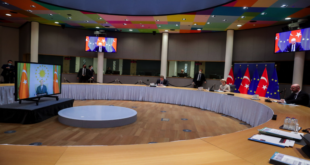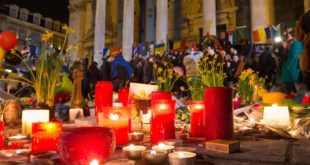“Arabic calligraphy is the artistic practice of handwriting Arabic script in a fluid manner to convey harmony, grace and beauty,” UNESCO said on its website.
PARIS – UNESCO: After a successful collaboration led by Saudi Arabia with 15 Arab countries under the supervision of the Arab League Educational, Cultural and Scientific Organization (ALECSO), ‘Arabic Calligraphy: Knowledge, skills and practices’ has been officially inscribed on Tuesday on UNESCO’s Representative List of the Intangible Cultural Heritage of Humanity.
With its importance derived from religious texts, Arabic calligraphy has played a pivotal role in the advancement of the Arabic language throughout history. For centuries, it has contributed to the transfer of Arab culture, customs and religious values thereby instilling a sense of pride and belonging among Arab people.
Today, it remains extremely popular and is used by artists and designers across a broad range of media, including in paintings, sculptures and graffiti, or ‘calligraffiti’. Visitors to the Kingdom can witness early forms of the Arabic language in ancient inscriptions at locations including UNESCO World Heritage Sites, AlUla and Himā Najrān.
Commenting on the announcement Minister of Culture Prince Badr bin Farhan, said: “We welcome the inscription of Arabic calligraphy, which is the result of the Kingdom championing this treasured aspect of authentic Arabic culture.”
A symbol of Arab and national identity, Arabic calligraphy is deeply woven into Saudi history and in recognition of its cultural importance, the Ministry of Culture designated the years 2020 and 2021 the ‘Year of Arabic Calligraphy’.
He added: “Throughout 2020 and 2021, the Ministry of Culture has worked to preserve this important art form through the ‘Year of Arabic Calligraphy’ which has further cemented the Kingdom’s position as a global hub for Arabic calligraphy and the arts.”
A fitting end to the ‘Year of Arabic Calligraphy’, the listing marks the ninth recorded by the Kingdom after:
-
- Al Ardah Al Najdiyah: a traditional dance from the Central Region;
- Al-Qatt Al-Asiri: an interior wall decoration applied by women in the Southern Region.
- Almezmar: a group dance from the Western Region;
- Arabic coffee.
- Date palm;
- Falconry; and
- Majlis: a place for community members to gather to discuss local events and issues.
Initiatives launched during the ‘Year of Arabic Calligraphy’ include a ground-breaking exhibition at Riyadh’s National Museum which shed light on the origins of the Arabic language, the development of calligraphy and the relationship between calligraphy, contemporary design and artificial intelligence.
 ForMENA Council for MENA affairs
ForMENA Council for MENA affairs



